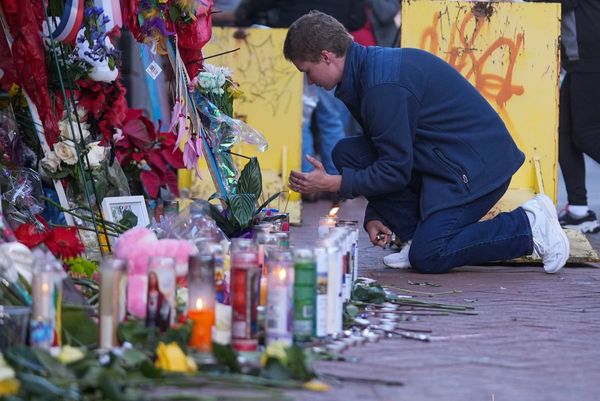
MUMBAI: Behind a cluster of tall trees and amid the impregnable thickets of buildings, smog and traffic in Bombay’s Fort area, the three-century-old St Thomas Cathedral has seen it all. But past its famous arches and inside its walls lined with sculptures, stained glass and liturgical art stands an intriguing piece of history that remains in good part unknown.
Inside the city’s oldest Anglican church, on its west wall, lies an imposing marble memorial that is decidedly out-of-place at first glance. A monumental figure of a freestanding Hindu Brahmin priest in dhoti and shawl with a downturned visage and his hands joined in prayer under a banyan tree, bending gracefully over an urn.
A closer examination of the frieze reveals a rare study in history, worship and art that steers the spotlight away from the realms of religion to one of social and cultural legacy. To understand how this one-of-its-kind monument of a Brahmin priest found pride of place in a church, one would need to delve into the life of Jonathan Duncan, Bombay’s longest-serving governor from 1795 to 1811, who lies buried at the Cathedral and to whom the memorial is dedicated.
At the heart of the pyramid shaped memorial — erected in 1817 by British inhabitants of Bombay and sculpted by John Bacon Jr. — is a biographical sketch of the Scotsman who arrived in India as a writer for the East India Company at 16 and went on to distinguish himself as an administrator, a patron of ancient Indian learning who established India’s first Sanskrit college in Benaras and as a social reformer who stamped out female infanticide in Benaras and Kathiawar. According to James Mackintosh, the Recorder of Bombay, Duncan had been “Brahmanised” by his long uninterrupted residence in India for 39 years.

The uppermost tier of the memorial features the young Brahmin and a female figure holding the scales of justice inscribing the words ‘He was a Good Man and A Just…’ on the urn. Near her feet are two books, an open scroll and a mirror with a serpent coiled around its handle. “The books and open scroll represent his erudition and patronage of learning. The woman, personifying justice, highlights Duncan's standing as a just and noble administrator,” noted historian Anila Verghese in a journal on South Asia Studies.
The mid-section designed like an altar holds a plaque eulogising Duncan and below this, two infants holding a scroll engraved with ‘Infanticide Abolished in Benares and Kattywar’. According to a 1958 thesis on ‘The Life and Career of Jonathan Duncan’ by historian VA Narain, Duncan was the first to notice and repress the prevalence of female infanticide among the Rajkumar clan.
“After directing the attention of the Bengal government to the existence of infanticide in Benares in October 1789, he devised a plan by which it might be checked. He recognised the special position of the Brahmans and had an extract from the Vratim Vayanta Parana translated to prove that this practice was against the Hindu religion. Then he assembled the Rajkumar chiefs and reasoned with them to sign an agreement renouncing the practice on 17 June ,1789. As infanticide also prevailed among the Raghuvamsis in Jaunpur, Duncan took similar engagements from them,” wrote Narain.
As for the western symbols in the memorial — weeping willow and urn or the face and physique of the Brahmin that conform to the Greco-Roman allegorical style — Vijaya Gupchup who authored ‘St. Thomas’ Cathedral Bombay - A Witness to History’ observes that it was a “fusion of the best from the East and West that characterised Duncan himself… In keeping with British ideas and ideals of the early 19th century.”
Indeed, the memorial tablets at Mumbai’s oldest church have been a reminder of British India for centuries, agrees Rev Avinash Rangayya, presbyter-in-charge of St Thomas Cathedral. “There’s a lot of indigenization in much of Bacon’s sculptural works but Duncan’s memorial is perhaps the most intriguing. People see it from a reformer’s perspective,” he says.







